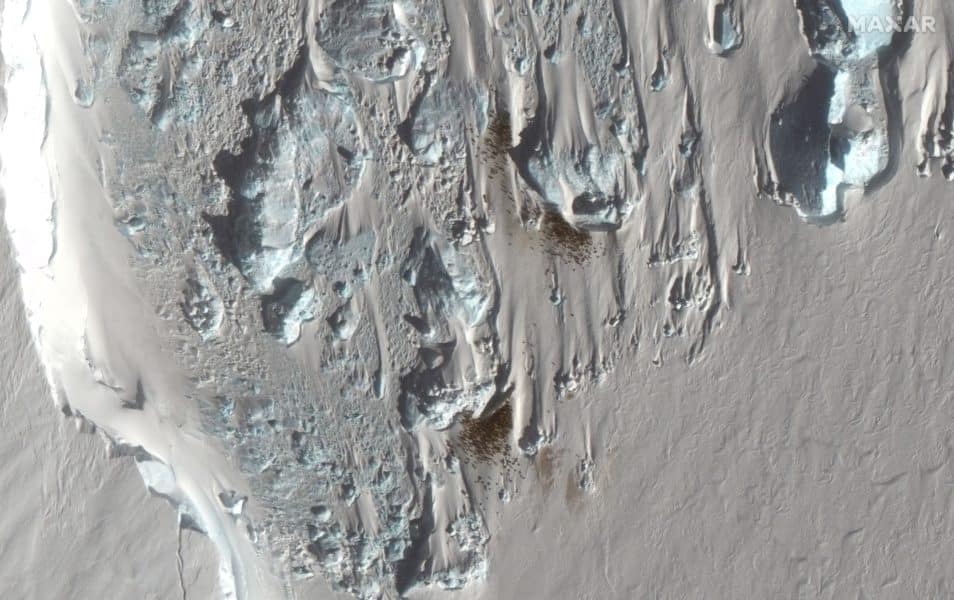Scientists have found a new emperor penguin colony using satellite images of one of the most remote and inaccessible places in Antarctica. The colony, home to about 500 penguins, makes a total of 66 known colonies around the coastline of Antarctica. The climate crisis is posing an existential threat to penguins as the sea ice is melting fast.

The team studied images from the European Commission’s Copernicus Sentinel-2 satellite mission, which were then compared with and confirmed by the images from another satellite – the Maxar WorldView-3 satellite. They identified the colony from the bird’s feces or guano, which are brown and easy to identify across the ice and rock.
Emperor penguins need sea ice to breed and live in areas that are very difficult for researchers to study as they are remote and inaccessible and can have temperatures as low as -60C. For the last 15 years, British Antarctic Survey (BAS) scientists have been looking for new colonies by searching satellite imagery for guano stains on the ice.
“This is an exciting discovery. The new satellite images of Antarctica’s coastline have enabled us to find many new colonies. And whilst this is good news, like many of the recently discovered sites, this colony is small and in a region badly affected by recent sea ice loss,” lead author Peter Fretwell, who studies wildlife from space, said in a statement.
The size of the colony has a direct impact on the survival chances, the researchers explained, as the birds gather together for protection against winter storms – especially during the two-month period in which male penguins incubate the eggs before they hatch. Colonies have been lost due to changes in the ice in the past.
For example, BAS scientists used their satellite technology to detect a catastrophic breeding failure among the second-largest Emperor colony in Antarctica between 2016 and 2019. Almost all the chicks born over three years died as their sea ice habitat in Antarctica shrank due to warm and stormy weather that broke the critical sea ice.
A very challenging future
The loss of sea ice because of climate change is severely threatening penguin’s habitat, while ocean acidification is also reducing the supply of krill, a key food source – putting them at risk of population collapse. By 2050, the size of the penguin colonies is expected to decrease between 26% and 46% under low and high emissions scenarios, respectively.
This won’t happen equally across Antarctica, the researchers at BAS have said. Penguin populations will probably remain stable in the Weddell Sea and the Ross Sea. However, colonies in the Western Pacific Ocean, the Amundsen Sea, the Indian Ocean, and the Bellingshausen Sea are projected to decline by over 90% due to the melting sea ice.
The US government declared last year that the emperor penguin is a threatened species due to the existential risk they face. While there are none in the wild in US territory, the listing could accelerate international conservation measures for the species, reduce industrial fishing that depletes its food source and accelerate action on greenhouse gas emissions.
Was this helpful?



